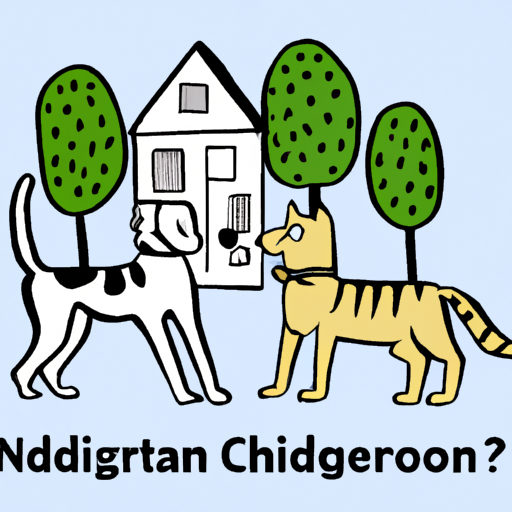Introduction
You may have noticed your pet canine’s instinctual reaction towards felines and wondered, “Why do dogs attack cats?” This question has puzzled caregivers like you for centuries. Within this comprehensive guide, we’ll dissect the mystery behind this age-old rivalry, shedding light on the instinctual, territorial, and predatory factors that contribute to these interactions.
Understanding Canine Instincts
Dogs, like their wolf ancestors, possess a deeply ingrained predatory instinct. This instinct may be key to understanding the answer to our question.
- Chase Reflex: Dogs have an innate chase reflex, triggered by fast-moving objects – including a darting cat.
- Pack Mentality: Dogs are pack animals. They may view cats as potential threats to the “pack” (your family), leading to protective behavior.
The Aspect of Territoriality
Territoriality plays a significant role in a dog’s behavior towards cats.
- Dogs are naturally territorial creatures. They may view a cat’s presence as an invasion of their space.
- A dog may also feel the need to protect its resources (food, toys, you) from the ‘intruder’ cat.
Socialization and Training
Your dog’s interaction with cats can largely be influenced by its early socialization and training.
| Age | Level of Socialization |
|---|---|
| 0-3 months | High |
| 3-6 months | Moderate |
| 6+ months | Low |
Early exposure to cats can help a dog understand them as companions rather than prey.
How to Prevent Dogs from Attacking Cats
You, as a caregiver, can take steps to foster peaceful cohabitation between dogs and cats.
- Slow Introduction: Introduce the dog and cat slowly, starting with scent before physical interaction.
- Supervised Interactions: Keep initial interactions supervised and short.
- Training: Teach your dog commands like ‘leave it’ and ‘stay’ to control their behavior around cats.
- Safe Spaces: Create safe spaces for the cat to escape to if they feel threatened.
FAQ
Q: Are certain dog breeds more likely to attack cats?
A: While individual temperaments vary greatly, some breeds with high prey drives, like terriers and huskies, might be more prone to chase or attack cats.
Q: My dog and cat grew up together but the dog still chases the cat. Why?
A: This could be a manifestation of the dog’s predatory instinct or playful behavior. It’s crucial to monitor these interactions to ensure they don’t escalate.
Q: Can older dogs be trained to coexist peacefully with cats?
A: Yes, with patience and consistent training, older dogs can learn to live peacefully with cats.
Remember, understanding your dog’s instincts and providing proper socialization and training are crucial in preventing dog-cat conflicts. As a caregiver, you are in the unique position to help foster a peaceful cohabitation between these two beloved pets.



